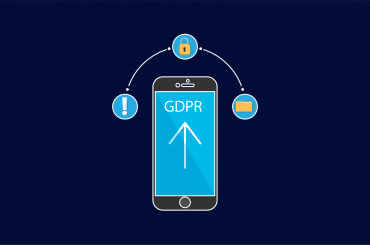The GDPR Article 17 right to erasure request can be submitted for the removal of personal information. This provides an individual with greater control over her personal data.
The process of submitting a request is very easy and straightforward. However, there are still some key points that you need to keep in mind while submitting it. This will ensure that the request is successfully submitted and processed.
In this article, we provide an in-depth guide on GDPR article 17 right to erasure.
Contents
What is GDPR Article 17 Right To Erasure?
The GDPR Article 17 right to erasure grants individuals greater control and protection over their personal data. This can be used to request the permanent removal of information.
The right to erasure is only available to individuals. Companies and other organizations cannot exercise this right. Further, the GDPR is only applicable to the citizens and residents of the European Union. However, many countries have elected their own data protection regulations. This grants a similar right as the right to erasure.
Article 17 provides a list of reasons when the right can be exercised. This is done to ensure that the request is only raised for valid reasons.
How to Submit A GDPR Article 17 Right To Erasure Request?
A GDPR article 17 right to erasure request can be submitted directly to the company or organization processing your personal data. There is no standard template for sending such a request. It can be done in an oral or written manner. Further, you can contact any employee or part of the company for submitting such a request.
There are a few things that need to be included in the right to erasure request. These are listed below:
- The name and details of the person who is submitting the request. This includes the contact information, permanent address, and email address. Along with this, you also need to submit a government-issued identity card and proof of address.
- The right to erasure request can be submitted by a third party in place of the data subject. In such a case, the request needs to clearly mention the same.
- If the data subject is different, then the name and personal details of the data subject needs to be submitted separately. This includes name, permanent address, contact details, and email address. Further, proof of identity and proof of address needs to be provided for the data subject as well.
- Article 17 provides a set of reasons which can be used for submitting a request. You need to select the appropriate reason and mention it clearly.
- The details of the information that needs to be removed. Here, be as specific as possible. If you only want to remove a part of the webpage, then you should specify the same in your request.
- Finally, you need to submit a declaration. This is to ensure that all the information mentioned in right to erasure request is correct.
That’s it! Those are all the key points that need to be included in GDPR article 17 right to erasure request.
FAQ
-
Do you have the right to erasure under GDPR?
The General Data Protection Regulation is only applicable to the citizens and residents of the European Union. Before submitting a request, you need to verify if you are protected under the Regulation.
-
What is right to erasure?
The right to erasure grants individuals the right to request for permanent removal of their information.
-
How do you respond to a GDPR erasure request?
As per the law, the company is required to respond to a request within 30 days. If you decide not to remove the information, then you need to provide clear reasons for doing the same.
-
Can I refuse to delete data under GDPR article 17 right to erasure request?
Yes. Article 17 provides a list of exceptions for this. When responding to the request, you need to select a reason and clearly mention the same. Keep in mind that the data subject has a right to move to court and request for the removal of information.





